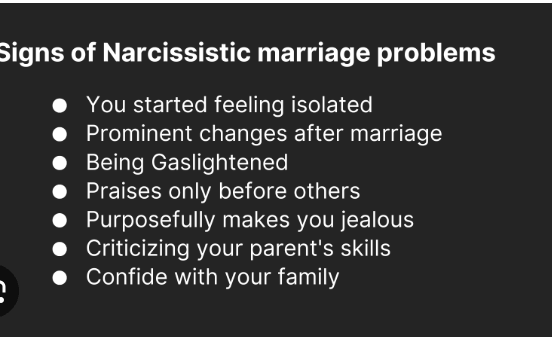Narcissistic Ex Wife Signs: How to Identify and Deal With a Narcissistic Ex

Understanding the intricacies of a narcissistic ex-wife can be pivotal for one’s emotional health and recovery. Key characteristics such as manipulative behavior, an inflated sense of self-importance, and an alarming lack of empathy often surface in these relationships. Recognizing these signs is the first step toward safeguarding your well-being and establishing effective boundaries. However, confronting these dynamics requires more than awareness; it necessitates strategic approaches to communication and personal growth. As we explore these essential strategies, the path to regaining control over your life becomes increasingly clear.
Understanding Narcissism
Understanding narcissism is essential for recognizing the complex behaviors exhibited by individuals with this personality disorder, as it often manifests in ways that can be both perplexing and damaging in personal relationships.
The narcissism definition encompasses a pervasive pattern of grandiosity, need for admiration, and a lack of empathy, characterized by distinct narcissistic traits like entitlement and exploitative behaviors that can profoundly affect those around them.
Common Traits of Narcissistic Ex-Wives
Narcissistic ex-wives often exhibit traits such as excessive self-importance, which can manifest in a constant need for admiration and validation.
This inflated sense of self can lead to manipulative behavior patterns, where they may exploit relationships for personal gain.
Understanding these characteristics is crucial for recognizing the impact they can have on interpersonal dynamics and emotional well-being.
Excessive Self-Importance
Self-importance manifests in various ways among individuals, particularly in the context of narcissistic ex-wives.
Common self-importance examples include an inflated ego, where they often exaggerate their achievements and dismiss others’ contributions.
This behavior can lead to a lack of empathy and an inability to acknowledge differing perspectives, creating challenges in interpersonal relationships and hindering personal growth for both parties involved.
Manipulative Behavior Patterns
In the realm of interpersonal relationships, manipulative behavior patterns often emerge as defining traits of narcissistic ex-wives, significantly impacting those around them.
Common manipulative tactics include gaslighting and guilt-tripping, leading to emotional exploitation. Such behaviors create a toxic dynamic, undermining the emotional well-being of others.
Recognizing these patterns is crucial for reclaiming personal autonomy and fostering healthier relationships post-separation.
Read More Doug Brien Net Worth: Real Estate Innovator’s Wealth
Emotional Manipulation Techniques
Emotional manipulation techniques employed by narcissistic ex-wives can profoundly impact their partners’ mental well-being.
Common methods include gaslighting, which creates confusion and self-doubt; guilt induction strategies that leverage emotional vulnerability; and love bombing, which fosters dependency through excessive affection.
Understanding these tactics is crucial for individuals seeking to navigate the complexities of their relationships and regain a sense of autonomy.

Gaslighting and Confusion
Among the various tactics employed by narcissistic individuals, gaslighting stands out as a particularly insidious form of emotional manipulation.
This technique often involves confusion tactics, such as denying past events or misrepresenting reality, leading victims to doubt their own perceptions.
Common gaslighting examples include trivializing feelings or shifting blame, ultimately eroding the victim’s self-confidence and autonomy.
This makes it imperative for individuals to recognize these patterns for their emotional freedom.
Guilt Induction Strategies
Recognizing the patterns of manipulation is vital in understanding the various strategies employed by narcissistic individuals.
Guilt trips often serve as emotional blackmail, compelling victims to feel responsible for the narcissist’s unhappiness. This tactic can create a toxic dynamic, where the victim is pressured to meet unreasonable demands.
Awareness of these strategies is essential for regaining autonomy and fostering emotional resilience.
Love Bombing Techniques
Love bombing, a term coined to describe a manipulative tactic often employed by narcissists, involves an overwhelming display of affection and attention aimed at establishing control over an individual.
This emotional rollercoaster can create confusion, leading victims to question their self-worth.
Recognizing love bombing is crucial for regaining autonomy, as it often masks deeper issues of manipulation and emotional dependency inherent in narcissistic relationships.
Lack of Empathy
Empathy, a fundamental aspect of healthy interpersonal relationships, is often notably absent in individuals exhibiting narcissistic traits.
This emotional detachment hinders their ability to understand or relate to others’ feelings, significantly impacting relational dynamics. Consequently, interactions become one-sided and superficial, leaving partners feeling invalidated and isolated.
Recognizing this lack of empathy is crucial for those seeking to navigate the complexities of a relationship with a narcissistic ex.
Need for Control and Dominance
In relationships with a narcissistic ex, the need for control and dominance often manifests as a pervasive demand for power over various aspects of life.
Control tactics may include manipulation of finances, social interactions, and personal choices.
Dominance displays can undermine autonomy, leaving individuals feeling trapped.

Recognizing these patterns is crucial for reclaiming personal freedom and establishing healthy boundaries moving forward.
Gaslighting Behaviors
Manipulation in relationships with a narcissistic ex often extends beyond mere control to include gaslighting behaviors, which can profoundly distort an individual’s perception of reality.
Common gaslighting tactics include denying events, shifting blame, or trivializing feelings, leading to significant emotional confusion.
Recognizing these patterns is essential for reclaiming personal autonomy and fostering healthier interactions, ultimately paving the way for emotional freedom and healing.
Read More Doug Ivester Net Worth: Former Coca-Cola CEO’s Wealth
Impact on Your Mental Health
Experiencing a relationship with a narcissistic ex can significantly undermine an individual’s mental health, leading to a range of psychological challenges.
Victims often face anxiety, depression, and low self-esteem, which can severely impact emotional wellbeing.
The constant manipulation and emotional turmoil may create a pervasive sense of confusion and self-doubt, making recovery essential for regaining personal autonomy and fostering a healthier future.
Strategies for Effective Communication
Navigating communication with a narcissistic ex requires a strategic approach, especially after the emotional toll such relationships can inflict on mental health.
Employing active listening can facilitate understanding, while firm boundary setting protects your emotional well-being.
Moving Forward After the Relationship
While the end of a relationship with a narcissistic ex can be profoundly challenging, it also presents an opportunity for personal growth and healing. Embracing this healing journey requires self-reflection, setting boundaries, and fostering resilience. Below is a framework to guide this transformative process:
| Step | Action | Outcome |
|---|---|---|
| Self-Reflection | Journaling feelings | Increased clarity |
| Boundary Setting | Establish limits | Enhanced autonomy |
| Seek Support | Engage with friends | Emotional stability |
| Pursue Interests | Explore new hobbies | Personal fulfillment |
Conclusion
Navigating the turbulent waters of a relationship with a narcissistic ex-wife can leave lasting emotional scars. The insidious nature of manipulation and the chasm of empathy create an environment fraught with confusion and self-doubt. However, by establishing firm boundaries and prioritizing personal well-being, individuals can emerge from this emotional tempest stronger and more self-aware. Ultimately, this journey toward healing serves not only as a reclamation of identity but also as a beacon of resilience in the face of adversity.



